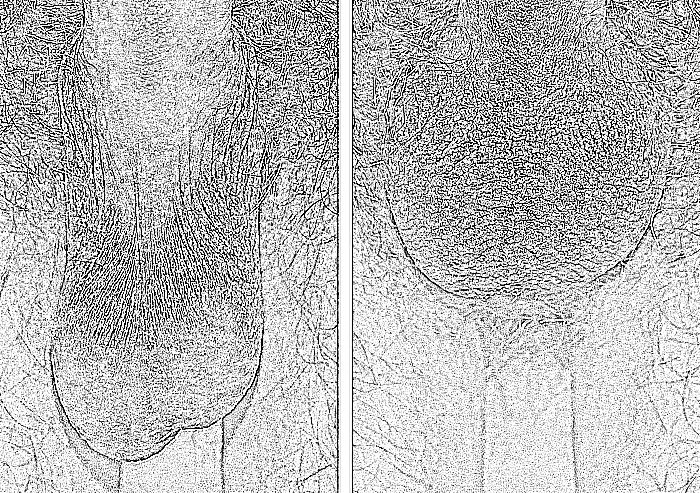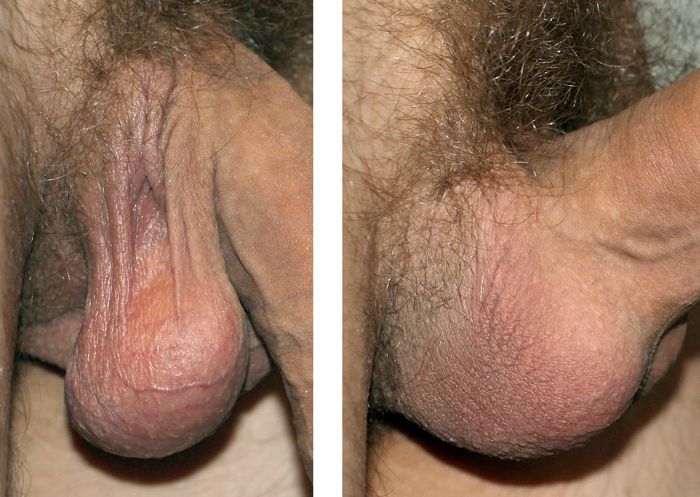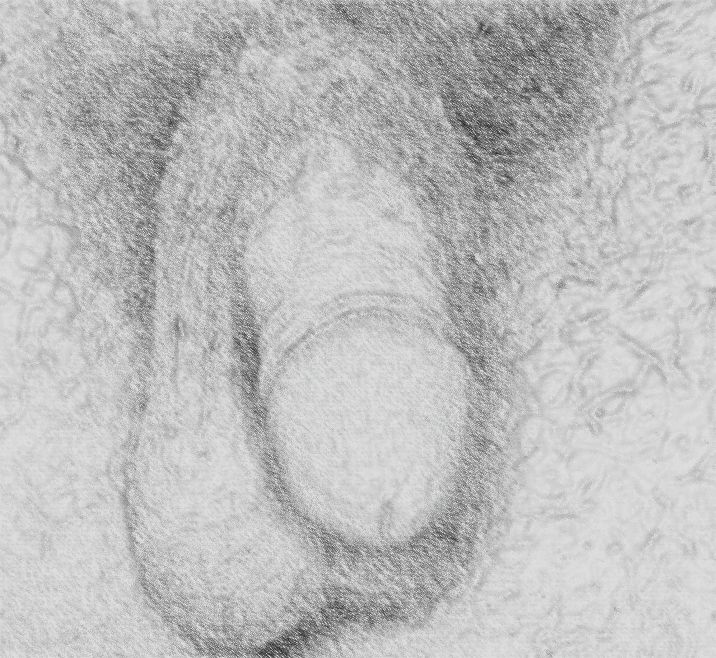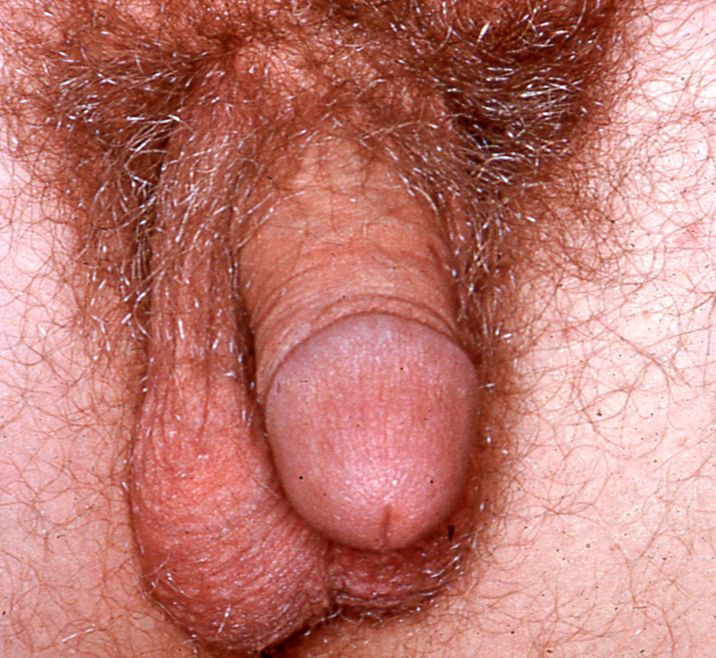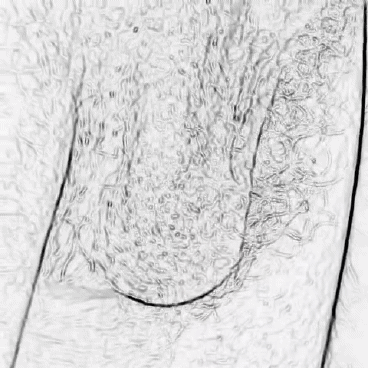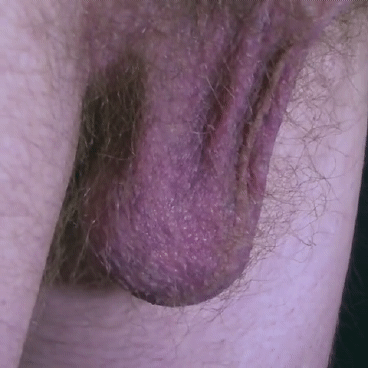[Content Warning: This post talks about handjobs in detail, including mentions of ejaculation. There are no images or illustrations.]
Full disclosure: I’ve gotten a total of about three, given absolutely none to other people. This post is mostly an extrapolation from solo experience with a few scattered tidbits pulled in from other sources. So, uh… Your mileage may vary.
Introduction
A handjob is the manual stimulation of someone else’s penis. In other words, using your hand to try to induce pleasurable sensations in a member belonging to another person.
Sometimes a handjob is the primary focus of a sexual interaction, while other times it is done in conjunction with or as a prelude to other activities. For instance, a handjob can be done simultaneously with a blowjob in order to increase the area of stimulation, or it can be done as part of foreplay to produce or maintain an erection for penetrative purposes. Sometimes it can be done as a finishing move after other activities, particularly if internal ejaculation is not desired, but an orgasm is.
A handjob need not lead to orgasm or ejaculation, if those are not desired. Often, the stimulation before those events can be pleasurable in its own right. A handjob is also not a “lesser” form of sexual activity and is not a “substitute” for other things.
A handjob is a fairly “low effort” activity. It doesn’t require much movement. There’s not a lot of setup required, and it can even be done fully clothed. And it is versatile and works well in almost any position. It’s also a largely safe activity, as no fluids need be exchanged, and gloves or a condom can be worn for added protection, if desired. There’s also no risk of pregnancy, as long as care is taken to avoid accidental transfer of semen into the vagina.
This post is written with the assumption that the owner of the penis has some experience in the method of its operation and will be able to provide guidance and feedback. If this is the case, you should seek that guidance and take that feedback where possible. However, it’s also possible the penis owner themselves has no idea what to do with the thing. That’s fine, as well. What’s outlined here will give you the basics, it just might take a bit more trial and error to determine what’s working.
The Basic Technique
Wrap hand around penis and move back and forth until done.
Hold On A Minute…
That sentence above is basically how other people describe them, but that’s a recipe for a really bad attempt. There’s a bit more finesse required.
But first, some terminology and some misconception busting.
In this, I’m going to mention a few locations on a penis. Since a penis can twist and turn and flip and flop, and since the owner of it can also be in any position to start with, “up”, “down”, “top”, “bottom”, whatever, don’t necessarily make sense. So here’s what I’m using terms to mean. “Base” is where the penis attaches to the rest of the body. “Tip” or “end” is the free end, where the glans and the urethra are. “Up” describes a movement toward the tip, while “down” is a movement toward the base. The “top side” or “front” is the side that faces out when the penis is flaccid, and is on the same side as the owner’s chest. The “bottom” or “back” is the side that rests against the testicles when flaccid, and is where the urethral tube runs. The glans or head is the knobby mushroom bit at the end, and the coronal ridge is the bit of the overhang there. The shaft is the tube section that connects the glans to the body. The foreskin is a extension of the skin of the shaft that covers the head, but it’s not present on every penis. Then the testicles are the dangly bits in a separate bag, behind the penis. This site’s section on The Penis has a more in depth guide to the anatomy of that area, including illustrations and labeled photos, if you need more information.
As for the misconceptions: There are a lot of euphemisms for handling a penis, often related to masturbation. Jerking off, whacking off, tug job, beating meat, and so on. These all imply violent, intense motions. These implications are largely wrong. A jerking motion is often not conducive to pleasure, the penis probably shouldn’t be grabbed and tugged like a rope, and only a handful of people would actually enjoy having their meat beaten. The motions are often more continuous and flowing, even when they’re intense and fast..
The Slightly Less Basic Technique
(This section assumes that the penis is already reasonably erect, but there’s a section later on what to do if it’s not.)
First, position yourself so that you’ll have a comfortable way to reach the penis without strain. This is important, because you may be at this for a while and don’t want to hurt yourself. (If you’re going for the speedrun, it might only take a few minutes, but expect 10-30 minutes for a more typical session.) Also, the first few times you do it, you may experience some fatigue, because you’re using your hands and arms in a way you’re not accustomed to, but if you experience too much soreness or fatigue (especially in the wrist), that’s probably a sign that you should shift position. The penis probably won’t care too much about which direction your hand is facing, so be more concerned about your comfort, at least to start. (More advanced techniques would require more specific hand positioning, but those aren’t covered in this guide.)
Wrap your hand around the shaft of the penis, sort of like you’re grabbing the handle of a milk jug or a rolled up newspaper. If your situation involves a larger penis or a smaller hand, don’t worry if your grip doesn’t make a complete loop around the circumference. It should still work out.
The goal is to hold it somewhere between loosely and firmly, but not super tight so that you’re crushing it. Finding the ideal pressure will take time, and it’s largely up to the owner of the penis to communicate their preference. But for now, just give it a best attempt.
Move your hand up and down along the shaft of the penis. Start slowly to get the feel of it. Go for a smooth, uniform motion.
You should feel the skin of the shaft slide across the harder inside parts of the penis somewhat, but your hand should also slide across the skin as you go. You can use this to calibrate your grip pressure. If you don’t feel the skin sliding against the harder insides, you’re probably gripping too loosely. But if you’re pulling the skin and it’s not sliding under your hand, you’re probably too tight. But that’s just a general guideline. Each one is different. In the case of a penis with a foreskin, it will have more travel on the shaft, so you might not need to let the skin slip much under your hand, while some penises without foreskins might not have skin that slides over the shaft much at all, and therefore would require the hand to slip over the skin to a much greater extent. The owner of the penis can tell you what’s too much, too little, or just right.
Once you’ve dialed in the pressure, move on to speed. Too slow, and there won’t be enough stimulation to maintain the erection nor the interest of the penis owner. Too fast, and it can be overwhelming and unpleasant (and you’ll get tired). Like pressure, the ideal stroking rate should be determined in consultation with the owner. Fortunately, there’s likely a pretty wide range of speeds that work. Unfortunately, I have no clear way of determining nor describing what that range might be.
After pressure and speed, the third component is stroke length. The most basic technique is to just stroke the full length, from the base to the tip. Some caution should be taken around the glans, as it can be super sensitive in certain circumstances for certain people. If the penis has a foreskin, it might be preferable to pull the foreskin up and over the glans. Consult with the owner for more information. If you’re given the go ahead to include the glans, stroke all the way up so that part of your hand extends past the tip, but not so far that the penis comes completely free of the grip. If the glans is off limits, halt the upstroke before you reach it (The coronal ridge marks a good point to turn around). On the downstroke, you can move all the way to the base (or to the extent that the skin will allow, if you’re gripping more tightly. Don’t try to pull the skin past where it resists.) before turning around.
Modify the size and shape of your grip to conform to the size of the penis underneath. Don’t hold a rigid, fixed diameter cylinder in your hand. This is particularly important if you go over the head, as you’ll want to try to match its curve to remain in contact the whole way.
Continue stroking up and down until done.
If the stroking results in an orgasm, it is highly likely that some or all of the penis will become hyper-sensitive during and immediately after. In this phase, if you continue stroking, it could be overwhelming and unpleasant for the penis owner. If that happens, they’ll likely request that you stop, potentially in a squirming, non-verbal manner. It may be a good idea to slow your stroking speed dramatically before it reaches that point. However, don’t remove your hand and don’t stop entirely during the orgasm, unless asked to do so. Removal of all stimulation suddenly can decrease the pleasure of the event.
After an orgasm, a penis will typically go into hibernation for a bit. It may no longer respond to stimulation, and the erection may dissipate. The owner of the penis may also go into hibernation themselves for a while. Multiple orgasms are possible, but that’s an advanced technique that’s not covered here.
One more thing for this section that’s a bit important is the angle you’re stroking at. When flaccid, the penis moves in all sorts of directions easily. However, when erect, the range of motion is limited considerably. Commonly, an erect penis will move freely in an arc from straight out and perpendicular to the body, to lying flat against the stomach, pointing at the owner’s head. Movement is limited toward the feet and side to side. Take care not to move it outside of this range or you can cause pain or even injury. Some advanced techniques may push the boundaries, but don’t do that yet.
And there you have the basics.
Lube
Sometimes (Often?), the sliding motion needs a bit of assistance. After all, there’s a fine line between pleasure and friction burns in an embarrassing place. In particular, if the penis does not have a foreskin, there may not be enough skin to do the sliding over the core of the shaft. And even in cases with a foreskin, going dry may not be the most pleasant experience. This is where lube comes in.
Lube is basically anything that makes something slippery. Applying lube to a penis will reduce friction and allow the hand to move more easily over the surface, which generally results in a more pleasurable experience.
However, you need to use just the right amount of lube or things won’t work. Too little, and friction isn’t reduced enough. In some cases, not using enough lube can actually make things worse, as the lube ends up being more sticky than slidey. But on the other end of the spectrum, applying too much lube will make your hand slide right off. You want to find the sweet spot, where friction is reduced, but not eliminated. You still want some friction to allow the hand to pull at the skin slightly.
The primary rule of lube is to remember that it’s easy to add more if you use too little, but hard to take it away if you use too much. So always go on the lower side of what you think you might need, and add more if it’s not enough. It usually won’t take much. And each type of lube will need a different amount.
Yes, there are multiple types of lube. Different consistencies, different ingredients. Far too many to get into here, so I’ll just mention a few things to keep in mind. Oil based lubes will wreck condoms and toys and can sometimes cause problems if used vaginally. If all you’re doing is the handjob, they’re fine, but stick with water based lubes if you’re doing anything else. Water based are a good all-around lube that’s safe for condoms, toys, and internal use, however, they can dry out and get sticky pretty quickly when exposed to air. Saliva can work, and is probably your best bet if you’re also planning on performing a blowjob. The penis itself may also produce a lubricating fluid in some circumstances, but it often isn’t enough for a handjob. (There is a more in-depth guide to lube here.)
Some lubes may stain some fabrics.
There’s a pretty good chance that if the penis needs lube to operate, that the owner already has a preferred lube available that they use when operating it themselves, so you can use that. If they don’t or it’s not available, probably the most common lube for dealing with a penis is ordinary hand lotion. Cheap, long lasting, easy cleanup, and works pretty well. However, it’s usually oil based, so don’t use it if there will be condoms, toys, vaginae, or mouths involved at some point in the session.
The “Ending”
Often, the goal of a handjob is to proceed to an orgasm. In most cases, that will be accompanied by ejaculation.
If you’ve never seen that happen before, here’s what to expect. The penis will begin to contract, and a relatively small amount of a whitish fluid will be expelled from the urethral opening at the tip of the penis, with each contraction. The amount of fluid, the number of contractions, and the force of each burst is largely unpredictable and is based on a number of factors, including how long it’s been since the last ejaculation, how hydrated the owner is, how “good” it was, and even things like angle and pressure on the shaft. An ejaculation can be anything from a tiny amount barely dribbling out, to several milliliters flying several feet across the room.
While some people enjoy the result, others find it extremely off-putting. Sometimes so off-putting that if can ruin the entire experience. This is especially prevalent among ace people, although certainly not universal. Here are a few different tips for handling the ending in different scenarios.
If ejaculation isn’t an issue for you, then stroke away. You might want to direct it where to go, though. (More on that in a bit.)
If ejaculation is entirely out of the question, you can stop before you get there. The owner of the penis can typically tell when they’re approaching orgasm, so if you speak with them ahead of time, they may be able to warn you. Sometimes, though, the advance notice that the penis gives doesn’t leave enough time to prevent the ejaculation entirely, but with a partner who’s paying attention, you might be able to get your hand away.
If ejaculation is fine, but you’d rather not touch that stuff, there are a few options. First, you can ask the owner to take over and finish the job when they’re getting close. Or, you can have them wear a condom, since condoms are designed to contain that when it happens. On a similar note, you can wear a glove. Finally, as you build up your experience points, you’ll likely gain an aiming perk, which lets you direct it where you want it to go. With that, you can direct it so you, including your hand, can stay out of the line of fire.
(As a side note, the default case is that if the handjob proceeds to climax, that ejaculation will not be an issue. Any alteration from that default should be discussed with the penis owner before commencing to avoid confusion or disappointment. Plus, they will need to be aware that they will need to tell you went to stop.)
Aiming it is useful in general. It’s easier to clean if you know where it all went. While the distance it travels may vary, in most cases, it will go at most a few inches, pretty much straight out from the tip. Gravity and air resistance will take over pretty quickly, and it will fall. Overall, it tends to trace the path of an arc.
Now, you can use calculus to predict the trajectory, or you can just use this cheatsheet: If you aim the penis straight up, the ejaculate will come straight down and land on the tip of the penis or your hand. If the owner of the penis is standing, the ejaculate will go in front of them and will land in front of their feet. If sitting or laying back and you aim at an angle up toward their torso, it will typically land on their stomach or chest.
You can also put a towel or a tissue over the tip just before ejaculation for the easiest cleanup outside of using a condom.
Porn alert! A lot of porn places a lot of emphasis on having the semen land on the partner. This is not, under any circumstances, required! You certainly can do that if you like, but you don’t have to. An orgasm will feel the same, regardless of where the semen ends up landing.
(BTW, I put “ending” in quotes because while orgasm/ejaculation often marks the ending of a sexual session, it doesn’t have to. You can stop before you get to that point if you want, or shift activities and keep going afterwards.)
“Can I Watch?”
One way to learn what works for the penis owner is to ask them if they would demonstrate for you. Practically speaking, the primary difference between masturbation and a handjob is whose hands are involved. So, watch how they masturbate, then try to emulate what you’ve seen them do. Obviously, you won’t have the direct feedback mechanism that lets them know what’s working, but you might pick up a few tips. As a bonus, the penis owner may find the request itself extremely exciting.
Related to “Can I Watch” is “Can You Show Me How?”, where instead of just demonstrating, you can ask the penis owner to more directly guide your hand. This is a good way to dial in the pressure, speed, and stroke length.
Of course, these really only work if the penis owner is already experienced in these procedures and is willing to show them off. Some people (and this is more likely if your partner is ace as well) do not masturbate, and some people do not feel comfortable masturbating in front of another person, so this option may not be available.
Start It Up
Movies and porn and society in general would have you believe that the penis goes from soft to hard instantly, with the single tap of a magic wand. That’s not the case at all. Sometimes you’ll have to help get it going.
One option is to ask the owner to take care of it for you. That’ll probably work, although it’s probably not their preferred method.
You can take the direct approach, where you grab it and start sort of pulling, pushing, squeezing, rubbing, pressing, and kneading it until it starts to stiffen a bit. When it’s flaccid, you won’t be able to stroke it because it will just bend out of the way, but you can still sort of do some of the motions.
If oral sex is on the table, then you can try sucking on it a little bit with your mouth.
And then there’s the indirect approach, where you do other things in the hopes that the penis responds. Some options include kissing pretty much anywhere, but particularly the mouth, neck, nipples or chest. You can run your hands along their chest, stomach, or thighs. You can fondle the testicles slightly. You can press your body against theirs. You can remove some or all of your clothing, if the situation and your comfort level allows and if you haven’t already done so.
Eventually, the penis should reach the point where it is erect enough to begin the stroking procedure described above.
The Slightly More Advanced Techniques
So, we went over the basics earlier, but that’s not even close to the full story. There’s far more out there, far more than can be covered in a single post, and plenty which I’m not even aware of. But here’s a few slightly more advanced techniques to try incorporating as you go.
Be aware of the different zones of the penis. It’s not one uniform dangly piece of skin. Different areas have different levels of sensitivity and capacity for pleasure, and it’s possible to use this feature. The front side of the shaft is generally the least sensitive area, while the glans and the bottom side are more sensitive. The frenulum and the area around it can be one of the most sensitive zones. This is located on the “bottom” side of the shaft, near where it meets the glans. And there’s even a secret hidden section of the penis! The structure of the penis actually extends behind the testicles, between the legs, and sometimes rubbing or pressing that area can even be pleasant. Experiment with focusing on these areas, applying more or less pressure to them, and see what happens.
There’s more movements than just the basic full hand stroking action. In the earlier section, the only motion described was a simple, continuous back and forth stroking motion, using the full hand. That’s not all there is. Sometimes you can twist or swirl a bit (Can work well on the head). Sometimes you can use a couple of fingertips to rub in circles (Can work well on the frenulum). Sometimes you can make quick, short strokes (Can work well close to orgasm). Sometimes you can squeeze harder (Can work well if the penis loses its erection slightly). All of these different motions can produce different sensations.
Change up what you’re doing. The basic back and forth motion the same way can get tiring and boring after a while. So shuffle it around a bit. Go faster. Go slower. Squeeze harder or ease up. Slow to the point that the penis starts to go soft, then speed back up. Do two full strokes, followed by four quick strokes focusing on squeezing the frenulum and coronal ridge area, then do one long, slow downstroke all the way to the base. Switch hands.
Upstroke and downstroke can feel different. You can change the speed and pressure to enhance these different sensations.
If you have two hands, you can use them both. It may be tempting to just use the second hand to also stroke the penis in tandem with the first one, but it’s often best employed in a support role, doing something entirely different. Rub the chest and stomach. Play with the testicles. Press or rub the base of the penis or the area where it extends between the legs. Caress the thighs. Go for the prostate (only with explicit permission and preparation). Pinch the nipples. Focus exclusively on the glans or the frenulum while the other strokes the shaft. Masturbate yourself or touch other areas of your body, if that’s something you’re willing to do. Note: Your other hand should probably not be used to scroll through Pinterest on your phone.
There are different phases of sensitivity response. If you learn these different phases, you can use them to your advantage. There will often be a spike in sensitivity and pleasure just before the orgasm. If the penis owner indicates that they are in this zone, there are a couple of things you can do. If you ramp the intensity up to 11, that can quickly push them over to a strong orgasm. Or, you can slow things down a bit and try to stay in that zone. The pleasure factor is ramped way up in this area. A super slow full downstroke that takes several seconds to complete would’ve been dull earlier in the session, but while in this zone can feel extremely good. It’s possible to stay in that zone indefinitely, but to do so requires the penis owner to let you know when they are approaching orgasm, and for you to slow or stop until they fade away from that edge and indicate that it’s safe to proceed. But at the same time, you’ll have to take care not to diminish the stimulation so much that they revert to an earlier, less pleasurable phase.
